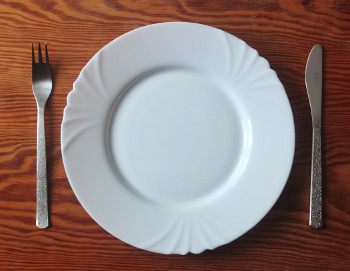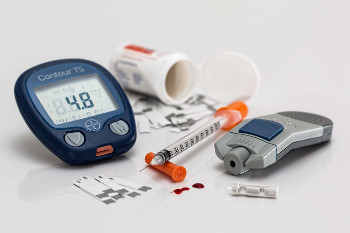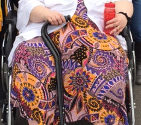Lipedema: 13 Reasons Keto Might Not Be Working For You
Are you questioning whether a ketogenic way of eating is right for you because you are not seeing the desired results? Or you are here because your progress has halted or plateaued? Or perhaps you have had a gap in your keto program and need pointers on how to get going and see results again? Let’s explore Lipedema: 13 reasons keto might not be working for you!
Choosing a Keto Way of Eating
A keto way of eating may not work for everyone, especially if you have underlying health conditions and have been advised by your medical professional to pursue another eating plan. Some people also find it too restrictive or difficult to follow. Keto is meant to be a long-term sustainable change in the way you view and consume your nutrition. It is not meant to follow short-term, get the desired results and fallback to your old way of eating. That will just ensure you put back on the pounds and inches you worked so hard to shed or reintroduce the same physiological issues you were experiencing prior to adapting to a keto eating plan.

Lipedema: 13 Reasons Keto Might Not Be Working For You
There is no one thing on this list that works for everyone who wants to jumpstart their path to sustainable results. Sometimes you may need to employ one or more items below to see what works for your body. Everyone’s body is unique and what works well for one may not work at all for another.
Are you frustrated with the lack of weight loss results? Not sure if you are reaping the benefits of following a keto way of eating? Could lifestyle issues, such as not enough sleep, poor food choices, inactivity, comorbid health conditions, medications, stress or something else cause a stall or plateau in achieving your keto goals? Let’s look at Lipedema: 13 reasons keto might not be working for you below to see if you can identify one or more things that will jumpstart your weight loss and health goals!
1. Are you really stalled or plateaued?
Our bodies are all unique and not everyone responds the same way to an eating plan. You may need to employ more than one thing to move past a stall. Everyone will need to examine their own eating habits and biohack their systems to find what is optimal for your individual needs.
How long have you been following a keto way of eating? Weight loss is not linear nor does it burn evenly across the body. You may exhibit changes in parts of body without losing a pound. You may also start to feel better without the scale budging too. Weight loss may not happen for up to three months, so give it time to work.
Are you truly in ketosis? Consistently logging your daily intake of all food will reveal if you eating too many carbohydrates, thus causing you fall out of ketosis. You can also measure your levels of ketosis using easy to read strips to monitor your progress.
Review your food journals and look for eating trends that might need to be adjusted, such as lowering your daily carbohydrates or increasing your fats or proteins, to jumpstart weight loss.
Have you tried intermittent fasting or a longer term fasting strategy to reset metabolism and kickstart your weight loss?
2. Non-Scale Victories (NSV)
Many people turn to keto for its weight loss abilities. However, there are many benefits besides weight loss that are also highly desirable. We call these non-scale victories (NSV) and they can be equally important, if not more than weight loss. The physiological and psychological changes can be quite phenomenal!
You may notice your body losing inches/centimeters in certain areas faster than you might see the scale move. This might seem absurd, but your body will do some re-sculpting during your journey. You may be building muscle, which will actually look like you are gaining weight as muscle mass is heavier than fat. Your body may also be retaining fluid or it is shifting your fat storage around within your body.
Take your measurements from head to toe and track those changes over time to see if you having NSVs while you are waiting for the weight loss part to happen. Be patient as your body adapts!
Other important NSVs to observe include
- the healing of your gut and digestive system (less bloating, gas, pain, and regular output)
- increased and sustainable energy levels
- increased mental clarity (reduction in brain fog)
- lower fasting glucose
- lower HbA1C
- lower cholesterol numbers
- lower CRP (C-reactive protein) inflammation markers
- better sleep, and
- overall increased well-being!
3. Intermittent Fasting
Fasting has three addressable components: 1) fasting for 24 hours or more, 2) intermittent fasting (an eating period balanced with a resting period), and 3) frequency of eating. Fasting for 24 hours or more is used for resetting your system, specifically giving your digestive system a substantial break to heal and rebalance your entire system. Your system will also carry out internal maintenance tasks it can’t normally do when your system is busy digesting food. This is a critical factor in boosting your overall physical and mental health!
Intermittent fasting is used to establish a regular eating and resting window. This allows your body to rest from digestive activities and invoke essential body maintenance activities, such as autophagy, which can help with weight loss and cellular cleanup. The smaller your eating window the greater the health benefits. The most common intermittent fasting schedule is 16:8 meaning 16 hours of restricted eating and an 8 hour eating window. Others do 14:10, 18:6, 20:4 or even 22:2 for those who do one meal a day (OMAD). Read more about fasting.
Establishing and maintaining an eating window is important. However, it is also important HOW OFTEN you eat during that window. If you are eating two to three meals with snacks in between you will continue to spike insulin levels. This will prevent your system from tapping into your stored fat energies, thus negating any weight loss efforts. Eat sufficient fat and protein foods to sustain you between meals and avoid snacking to keep those insulin levels low.
Note: I personally use a 16:8 schedule and eat two meals a day, a fat/protein shake with coffee in the morning and a large dinner. Sometimes I will have a snack in between those two meals and choose meat and cheese rollups or a handful of nuts to sustain me until dinner.
4. In Ketosis or doing Low Carb?
Being in a state of Ketosis, which means your body is solely using fats (ingested and stored) as its energy source as opposed to carbohydrates, is the desired state of a eating a ketogenic plan. This means you need to stay within the 5-10% of your daily intake of carbohydrates and consume an adequate level of fats and proteins to achieve and maintain a state of ketosis. You can easily test if your system is in ketosis by using disposable strips to measure your ketone levels.

If you consume too many carbohydrates in a day it will knock you out of ketosis. You can resume eating a keto plan, but it may take a couple days to move you back into ketosis. It is important to evaluate if consuming those extra carbohydrates is worth losing the benefits of being in ketosis.
If you are regularly consuming MORE than 5-10% of carbohydrates (20-50 grams/day) in your eating plan, it means you have chosen a low-carb way of eating. You will not achieve ketosis, but you will still be able to lose weight and reap some of the non-scale victories, albeit it at a slower pace.
Note: If you are eating too many carbohydrates you may experience insulin resistance. Your doctor may use a Fasting Plasma Glucose (FPG) test or an A1C test to look for prediabetic conditions. They will also assess your current physical condition, physical activity, eating habits, genetic factors, comorbid medical conditions and other factors to determine your propensity to have insulin resistance. (1) You could also try to lower your total daily carbohydrate consumption to 20 grams or less to see if that jumpstarts weight loss.
Note 2: the recommended daily allowance (RDA) of carbohydrates set by the Food and Nutrition Board of the Institute of Medicine is at least 135 grams per day based on a 2,000 calorie diet for both children and adults. They have not specified an upper limit. However, they recommend carbohydrates make up 45-65 percent of your daily intake. Assuming a 2,000 calorie per day intake, your carbohydrate calories would be between 900 and 1,300 calories, which equates to 225 and 325 carbohydrates consumed daily! (2)
5. Cheats and Binges
There may be strong temptation to eat a clean keto/low carb plan during the week and “reward” yourself on the weekend with a small cheat. Overindulging on carbohydrates and sweets one or two days on the weekend is not worth all the effort and success you made during the week! Keto and low carb ways of eating are meant to be lifetime sustainability plans. You cannot choose to do them for a couple days and then return to your old ways one or two days a week.
Cheating or binging on carbohydrates during the weekend will surely knock you out of ketosis. It will then take a couple more days of clean eating to get back into ketosis, which then only gives you a day or two of positive results before the next weekend is here. It is an unhealthy eating plan with negative consequences!
You may also need to ask yourself why you feel the need to cheat or binge in the first place. Do you have unsatisfied cravings or hunger issues? Are you feeling deprived of some foods? Are you eating for emotional reasons? Are you choosing poor food options because those around you are bingeing? These may be issues you need to address prior to resuming your journey to better health with a solid sustainable eating plan.
6. Processed Foods
You should avoid eating most all processed foods while on a ketogenic or low carbohydrate plan. This includes items premade in boxes, cans or frozen, with the exception of some vegetables. Processed foods generally contain lots of carbohydrates and hidden sugars (of all varieties). Some may even cause discomfort or digestive issues.
Eat real, non-gmo, preferably organic, meats, fish, vegetables, fruits, nuts, oils and other low carbohydrate foods. Single ingredient food are best, the ones that don’t require a label. If you need something more complex, make sure you can identify all ingredients and avoid unnecessary carbohydrates and sugars.
7. Sleep
Getting enough sleep is paramount to good health and success in your keto journey. Poor sleep habits raise cortisol levels, which has a negative impact on insulin performance. This can derail weight loss efforts and degrade physical and mental body performance.
Develop good sleep habits and routines. Get eight or more hours of sleep per night. Avoid stimulants past noon and eating within three hours of bedtime. Also avoid engaging in technology devices (computers, tvs, cell phones, etc.) without blue-light filtering capabilities. Prolonged exposure to blue-light disrupts the production of the hormone, melatonin, which is responsible for inducing sleep.
Increase your sleep quality by avoiding blue-light devices two to three hours before bed, turn on blue-light filters for your devices or invest in blue-light filtering glasses to block this disruptive light. You can also employ stress reduction techniques before bed like breathing exercises, meditation, yoga and relaxing special interests.
8. Stress and Hormones
Stress, especially chronic stress, can wreak havoc on the entire body. It is a systemic problem that can affect hormonal balances, organ function, cognitive abilities, blood pressure, sleep, and more, which can have long-term health impacts if not remedied.

As previously mentioned, stress raises cortisol levels, which negatively impacts insulin activity throughout the body. This can lead to muscle mass loss, muscle tension and pain, increased heart rates, increased weight gain (especially in the abdominal area) and digestive issues. It can also fuel cravings for carbohydrates and stimulate hunger. There may even be loss of interest in sex and other enjoyable activities.
There are several ways to manage your stress levels to put you back on track in your health journey. Resolving issues that cause stress, such as emotional trauma, medical conditions, medications and an overtaxed life style, is key to lowering cortisol levels. You can also engage in regular healthy exercise or choose a meditative approach to help reduce stress, too.
Hormones play a large role in regulating your metabolism and your ability to utilize stored energy. This is especially true for women during key hormonal shifts of puberty, pregnancy and menopause. Estrogen changes can cause a slower metabolism, loss of muscle mass and cause your body to store extra fat, especially in the abdominal area. Reduction in thyroid hormones can also affect your metabolism making it difficult to lose weight and burn stored energy. You may need to adjust your eating plan, exercise regimen and fasting schedules to accommodate these new hormonal fluctuations.
Seek medical assistance if you feel your hormonal imbalances are affecting your overall health or you suspect another medical condition may be interfering with your progress on your health improvement journey.
9. Water Intake and Electrolytes
Water is essential to all life. Those eating keto or low carb plans and have Lipedema naturally consume more salt and require additional water to flush the system. This is especially true if you have Lipo-Lymphedema and are trying to move the edema out of your limbs and system. Drinking too little water will create a state of dehydration and signal the body to retain more water out of self-preservation.
In addition to water, you also need to ensure you consume adequate electrolytes each day to keep the body functioning properly. You should be able to source ample electrolytes through the foods you consume, but in some cases you may need to take supplements to maintain one of the key electrolyte levels. The key electrolytes are: sodium, calcium, potassium, chloride, phosphate, and magnesium.
Note: consult your doctor prior to consuming supplements. Your doctor may run lab tests to determine if you are deficient in any key vitamins and minerals and then prescribe supplements to keep your body operating optimally. Some supplements, such as potassium, can be extremely dangerous to take without being diagnosed with a deficiency and having a doctor prescribe the correct dosage for your exact needs!
10. Exercise
Exercise is important, but is not necessary to actually lose weight. However, exercise is important part of creating and maintaining a healthy body. It doesn’t have to be grueling or punishing either. You need to find what works for you and do it routinely. Weight resistance exercises are best as they build and tone muscles. Simply getting out and walking will be beneficial too. The important part is to find an exercise(s) you like and can do without injury.
If you choose to engage in high intensity training (HIT) or any highly aerobic exercise, you may need some fats or carbs to help with significant amount of energy required to achieve your goal.
Those who are bedbound, have mobility issues or body limitations, such as is found in advanced lipedema, lymphedema or lipo-lymphedema, can still build and tone your muscles. There are several exercises you can do from your bed or chair that not only build and tone muscles, but also stimulate lymphatic flow. These include moving your feet up and down and side to side, simulated leg lifts and using hand weights.
Note: I use the mentioned exercises to help me recover from a back injury while being bedbound for a couple weeks. I still do them along with trying to walk more (even small distances count!) and lift heavier hand weights now. This has helped strengthen, tone and build leg, hip and arm muscles, which then allows me to be more mobile and able to perform more tasks myself.
11. Calories
All calories are not used equally! Therefore, calorie restrictions and counting are essentially ineffective in maintaining a healthy body and achieving weight loss.
Consuming the same amount of carbohydrates and fats will produce different responses by the body. Carbohydrates will raise blood sugar and insulin, which also blocks the release and utilization of energy stored in your fat cells. By contrast, eating low-carbohydrate foods will help satiate you for hours, keep insulin levels low, and allow your body to utilize the energy stored in your fat cells.
If you follow a ketogenic, or even low carbohydrate, way of eating there should be no reason to count calories. If you subscribe to stop eating when you feel full, you will eat far less food than the Standard American Diet (SAD). You should also notice you can eliminate snacking throughout the day and perhaps only eat one or two meals per day.
If you are new to a ketogenic or low carbohydrate way of eating you will want to track your calories, macronutrient ratios and electrolyte consumption daily until you become comfortable making your daily food choices. There are several food trackers to choose from to get you started. Here are a few to review:
12. Medical Issues

You may find that maintaining a healthy body or losing weight is not as easy as changing the way you consume food or engage in fasting. There are certain medical conditions that can make it difficult to lose weight and actually you may find that you gain weight. Some of these conditions include hypothyroidism, Cushing’s disease, PCOS, diabetes, metabolic syndrome, and high stress disorders. You need to work with your doctor to manage these conditions first and consult them with proposed dietary changes so they can monitor condition.
There are also medications that can inhibit weight loss and may actually cause weight gain. Some of the medications include opioids, insulin (for diabetes), antidepressants and anti-psychotics, drugs for high blood pressure, cancer drugs, steroids (like prednisone) and birth control pills.
Note: Some people have reported changing to a ketogenic or low carbohydrate way of eating has actually improved one or more of their medical conditions. This has resulted in reducing the dosage of their medications or even eliminating the need for medications!
13. Problem Areas
Alcohol
Alcohol contains non-nutritious calories and can cause a plateau or stall. I will be the buzzkill here and note that alcohol, besides its potential for addictive properties, does not contribute to a “clean” way of eating. You will have to decide if you want to break ketosis by having an alcoholic drink or two.
Artificial Sweeteners
Removing common sugars from your foods and replacing them with artificial sweeteners will certainly keep your carbohydrate counts down. However, the use of these artificial sweeteners will reinforce the craving for something sweet in your brain. It may also trigger between meal snacking.
Be careful of making too many sweet treats with these sweeteners, such as breads, cakes, pies and pastries as these often have little to no nutritional value. People tend to make these items as a replacement for old “comfort foods” and don’t realize this will keep them addicted to their old way of eating. It may also encourage overeating. Make them a special treat instead of the normal part of your diet!
Note: If you need to sweeten an item, such as coffee or tea, use a natural sweetener such as stevia or Monkfruit. They should be organically sourced without any additives, which may cause digestive problems. See my article on Factors Causing the American Obesity Epidemic for more information on sugars and sugar substitutes.
Snacking
The first area to examine if you feel the need to snack is your fat and protein intake. It is possible you are not getting enough fat and protein to satiate. Try increasing them and see if the urge to snack dissipates If you doing an OMAD (one meal a day) eating plan you may need to move to eating twice a day to keep satiated.
Be careful of “keto friendly” snacks! They many not be overly nutritious and provide you the level of fats or proteins you need in your day. These may also add empty calories better spent on real whole food.
Snacking may also be cause be an emotional response. Some people may find themselves snacking when under stress, sad, overworked or simply be too distracted to monitor their eating. You may need to do some introspection to find out what is triggering you to eat outside of regular meal times and address it before you can resume a healthy way of eating again.
Inflammatory Foods
You may be in a stall or gaining weight if you are consuming inflammatory foods. Everyone’s food tolerance is different. Some people’s digestive system cannot successfully process certain types of foods. You may be able to identify one or more foods that cause you discomfort or processing problems yourself or you may need the help of an allergist to test for these foods.

Some common foods that cause problems are grains, especially wheat products (gluten), nuts, shellfish, soy, tomatoes (nightshades), alcohol, dairy and eggs. If you suspect a food being a problem try eliminating it for a week and see if your system feels better. You can reintroduce it again to confirm your own findings. Some may need to do a full elimination diet where you start with bone both and add one food item back every three to four days until you find one (or more) that present digestive problems.
Once you find and eliminate all your inflammatory foods you will find you system feels healthier and your pain levels will decrease. You will also see better outputs, and elimination of bloating, gas and other digestive problems as well. T
Note: I was diagnosed as being lactose intolerant so I spent many years avoiding dairy. In reality a lab test showed I actually have Celiac disease, so it was the gluten, not the dairy, that was the problem. Once I cut out ALL gluten my stomach and digestive system felt so much better! I also don’t handle nightshades well or high histamine foods.
Too Much or Little Protein and Fat
Once you have established your macronutrient ratios you will need to stay very close, preferably on target, for your proteins and fats. Eating too little protein can lead to hunger, snacking and overeating. Eating too much protein can spike blood sugar causing a stall or even weight gain. It is also extra calories you do not consume. Staying on target with your protein intake will also help preserve your muscle mass.
Eating too little fat may also cause cravings by leaving you satiated for a little time. It may also cause you to become tired and lethargic. Eating too much fat may also cause a stall or even weight gain because you are pulling from the stored fat. Try to change where you are sourcing your fat. Instead of eating “fat bombs”, excessive oils and excessive creams try eating your fat in a piece of meat.
Lipedema: 13 Reasons Keto Might Not Be Working For You Summary
We hope after reading through all these points you were able to identify one or more issues that could help you break your weight loss stall and realign your eating with your current health goals. Again, there is no magic bullet or perhaps even one thing that might fix your stall, if you are even truly stalled by definition at the moment. It may take more than one item to perform that course correction to get you back on your desired path.
Our bodies are complex and unique. You may need to biohack your system, such as identifying and removing foods that give you digestive issues even though they are “keto-friendly” foods. Some people can achieve their goals by consuming more carbohydrates than others. And others may have to work with their clinicians for medical conditions and medications that may be interfering with weight loss efforts. Everyone is different. Don’t give up – find what works for you! Achieving weight loss and creating a healthier system is very possible, especially on a keto eating plan.
We hope you have found Lipedema: 13 Reasons Keto Might Not Be Working For You a good resource for your keto way of eating needs!
Wishing you a very successful health journey!
References:
- (1) U.S. Department of Health and Human Services: National Institute of Diabetes and Digestive and Kidney Diseases – Insulin Resistance and PreDiabetes
- (2) The Mayo Clinic – Nutrition and Healthy Eating


why isn’t there any research done on therapeutic fasting for lipedema? As in 24, 36, 42, 48 hr fasting periods weekly or monthly?
Hi Kristi,
This is a good question that has a complicated answer. I’m not aware of any studies done on extended fasting benefits specifically for those with Lipedema. There are studies that highlight the pros and cons of extended fasting for the general public. Here is an example of one – https://www.ncbi.nlm.nih.gov/pmc/articles/PMC9503095/. What should be considered first are the effects of switching from glucose to ketone fuel for energy and the impact is has on insulin resistance, lipid levels and metabolic function in the body. This concern should also extend to the effects on other acute or chronic conditions one may be experiencing, such as diabetes, cardiovascular disease, metabolic syndrome or hormone imbalances, which should always be done under a doctor’s supervision.
You may want to check Catherine Seo’s group, Lipedema Foundation, to see if they are aware of any current research in this area or perhaps request they consider research on this issue – https://www.lipedema.org/. I personally have seen benefits of extended fasting on my Lipedema and Lymphedema by allowing my body to focus on maintenance processes it normally can’t execute when continually eating, especially any of the inflammatory foods. Unfortunately, I had to cease the extended fasting due to other bodily issues so cannot personally answer the long-term effects I experienced. However, I will note the reduction of inflammation and pain, not to mention some weight loss, was beneficial and therapeutic.
Thank you for your question. Please keep me posted if you find any research on this topic!
To your continued health!
Esther